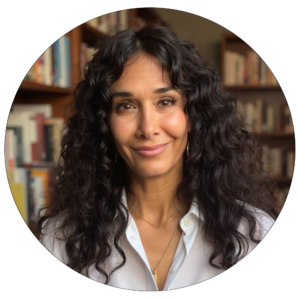Wisdom Dharma Chat | Dr. Joanne Cacciatore – Oct. 2025
October 29, 2025
In this episode of Wisdom Dharma Chats, Dr. Joanne Cacciatore, a bereaved mother, best-selling author, and founder of both the MISS Foundation and Selah Carefarm, joins host Daniel Aitken to discuss the upcoming documentary Selah, which raises awareness about grief and love. Directed by Jon Bregel, Selah is a powerful 30-minute documentary unlike any other. Filmed entirely on the grounds of Selah Carefarm, the world’s first for people living with traumatic grief, this intimate film opens a window into a place where sorrow and love live side by side. Through the stories of those who come seeking solace, connection, and the strength to keep going after devastating loss, this documentary reveals what it truly means to grieve—and to endure. At its heart, the film traces the vision of Dr. Joanne Cacciatore, whose own profound loss gave birth to Selah Carefarm. Woven into the narrative are raw and vulnerable moments from a four-day grief program, where participants allow their pain to be witnessed and their grief honored.
As Dr. Jo and Daniel delve into the documentary, how it came to be, and the process of creating it, their conversation explores the complexities of grief, especially in losing a child, and the emotional layers involved. It emphasizes the importance of self-care and support in navigating grief, including the unique challenges of grieving in a world that often doesn’t want to acknowledge it.
If you or someone you know is grieving, we invite you to learn more about Dr. Jo’s work through one of the resources below.
Learn more and help support the creation of Selah here.
Explore the work of the Selah Carefarm on their website, including how you can visit.
Continue to stay in touch with Dr. Jo through her website, The Center for Loss and Trauma
Explore The MISS Foundation here.
Learn more about Compassionate Bereavement Care Certification
Discover Dr. Jo’s work with Wisdom Publications here, including her books, online course, and more.
Meet Our Guest
 Dr. Joanne Cacciatore
Dr. Joanne Cacciatore
Dr. Joanne Cacciatore is a bereaved mother and the founder of the MISS Foundation, an international NGO that serves families whose children have died, and the Selah Carefarm, a sustainable restorative community that provides aid to anyone suffering traumatic grief. She is also a Professor and Senior Scholar in the Wrigley Institute of Sustainability at Arizona State University, spearheading the Graduate Certificate in Trauma and Bereavement. Her best selling book, Bearing the Unbearable: Love, Loss, and the Heartbreaking Path of Grief, is a national award-winning best seller that has helped revolutionize the way our culture thinks, and feels, about grief. She works with and counsels families from all around the world who have experienced catastrophic deaths. She served on Oprah and Prince Harry’s Mental Health Advisory Board for several years and was featured in their docuseries ‘The Me You Can’t See.” Dr. Jo, believing that current practices around food production are a social, ethical, and environmental justice issue, is a vegan and hasn’t eaten meat since 1972. She also teaches meditation, mindfulness, and compassion and ahimsa practices to students and clients from around the world. If you’re a provider seeking supervision or consultation, For more information on Dr. Jo visit her website.
